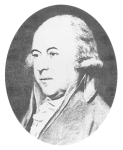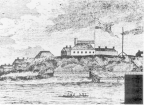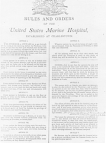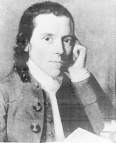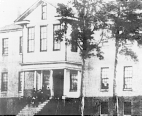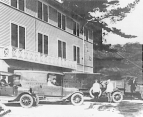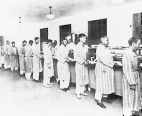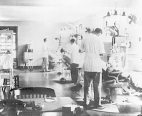 Disease Control and Prevention
Disease Control and Prevention
Health Care for Seamen
To show the new nation's concern that a healthy merchant marine was necessary for economic prosperity and a strong national defense, President John Adams signed into law in 1798 an act which furnished medical relief to merchant seamen.
A monthly deduction from the seamen's wage was used by the Federal Government to provide medical services for the seamen in existing hospitals or to build new hospitals.
The first marine hospitals were established in the port cities along the East Coast. As trade expanded along the inland waterways and the Great Lakes, the marine hospitals followed. One was erected even in Hawaii. The major function of the Marine Hospital Service until the 1870s remained the care of sick seamen. But after 1878 its functions were expanded greatly.
Gallery
John Adams, second President of the United States, signed into law on July 16, 1798 the Act for the Relief of Sick and Disabled Seamen, which established what is now the Public Health Service. Twenty cents was deducted from the monthly wage of each merchant seaman to build or rent hospitals and pay for the medical care provided.
1794
Castle Island in Boston Harbor was chosen as the temporary site for the first marine hospital. Dr. Thomas Welsh, a Harvard College graduate (1772) and participant in the Revolutionary War battles of both Lexington and Bunker Hill, was appointed as the physician in charge in 1799.
c. 1800
A more permanent home for the Boston Marine Hospital was found in 1804 in the Charlestown section of Boston. The rules and orders for this establishment were printed in April, 1808 and signed by Dr. Benjamin Waterhouse, who was the physician in charge from 1807-1809.
1808
Dr. Benjamin Waterhouse (1754-1846) introduced into the United States in 1800 the technique of smallpox vaccination discovered in England by Dr. Edward Jenner. Smallpox was one of the most dreaded epidemic diseases in America during the 17th and 18th centuries.
c. 1775
The first marine hospital owned by the Federal Government was purchased from the State of Virginia in 1801 and was located at Washington Point in Norfolk County. The hospital had been erected by the state of Virginia for use by merchant seamen. Following the Civil War, this facility was no longer used as a hospital. The building was demolished in 1933. Other early marine hospitals were established in the port cities of Boston, Massachusetts; Newport Rhode Island; and Charleston, South Carolina.
c. 1860
Ambulances and other vehicles parked by the San Francisco Public Health Service Hospital. The first marine hospital in San Francisco was completed in 1853 with special funds appropriated by Congress. The tax on seamen was not enough to finance all of the activities of the Marine Hospital Service and supplemental funds had to be appropriated constantly from Congress. The 1870 reorganization act that centralized the control of the Service increased the hospital tax on seamen from 20 cents to 40 cents per month. The tax on seamen was abolished in 1884 and from 1884 to 1906 the cost of maintaining the marine hospitals was paid out of a tonnage tax. After 1906 and until all of the Public Health Service hospitals were closed in 1981 medical care for merchant seamen and other beneficiaries was supported by direct appropriations from Congress.
c. 1920
Ambulatory patients in a cafeteria food line at Galveston's Public Health Service Hospital. This hospital in Galveston, Texas, was completed in 1931 as part of a major Public Health Service hospital building program begun in the late 1920s and completed about 1940.
1932
Dental clinic at the New Orleans Public Health Service Hospital. When the Marine Hospital Service became the Public Health Service in 1912 the names of the marine hospitals were changed to Public Health Service hospitals. The hospital housing this clinic was built in 1931. But the presence of a United States marine hospital in New Orleans, Louisiana, dates back to the early years of the 19th century. Congress authorized such a hospital in 1802 while the port was still under foreign rule. Starting in 1919 dental officers were added to Public Health Service hospitals and dispensaries filling a long recognized need.
c. 1935



